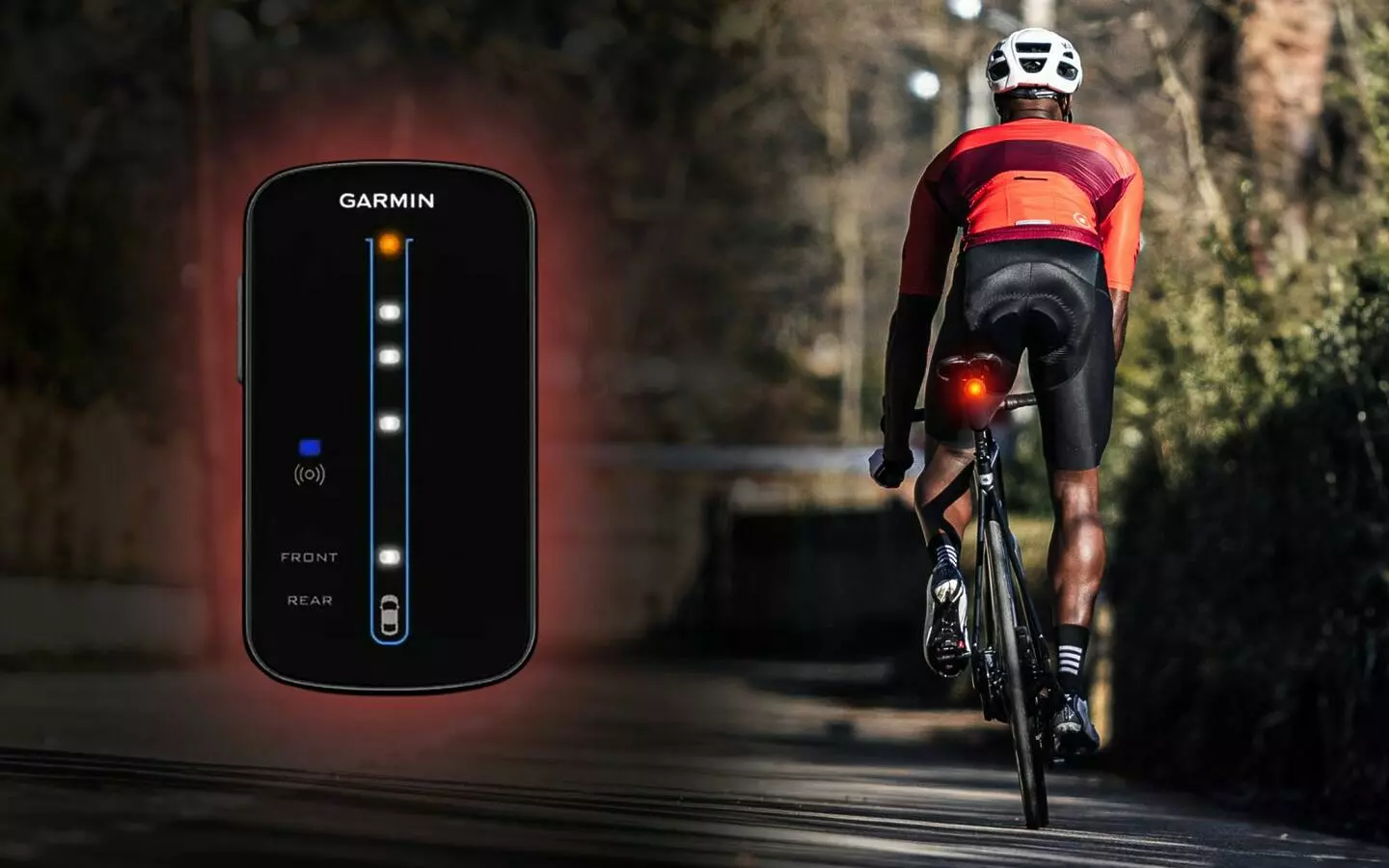In environments where cyclists are highly vulnerable, rearview radar bike lights, or simply cycling radars, have emerged as an additional safety tool for road cycling, as well as urban rides. In this post, we will take a look at how these devices improve safety by detecting approaching vehicles, providing real-time alerts to the cyclist. We will explain what cycling radars are, how these systems work, look into the pros and cons of getting one, and finally take a closer look at some of the models available on the market, such as the Garmin Varia or the Magene L508.
What is a cycling radar?
A cycling radar is a device that detects vehicles coming up from behind and alerts the cyclist to their presence and how close they are. These devices are usually integrated with a rear light, though versions without a light are also available. They connect to bike computers or smartphones via ANT+ or Bluetooth, giving the rider a clear view of what’s happening behind without needing to turn their head. They are mounted to the bicycle using a bracket that attaches to the seat post or saddle.
How do they work?
Cycling radars work by emitting radio waves from behind the cyclist, which bounce off approaching vehicles. This technology allows the device to detect their speed and distance, providing real-time alerts to the cyclist about any vehicles closing in from behind. The device calculates the speed and distance of these objects by measuring the time it takes for the waves to return and the frequency changes caused by their movement, known as the Doppler effect. When it detects an approaching vehicle, the radar sends visual and audible alerts to the cyclist through a bike computer or smartphone.
Detection relies on the difference in speed between the cyclist and the vehicle. However, if the approaching vehicle is traveling at a similar speed to the cyclist, the device may sometimes give a false negative, failing to alert the cyclist to its presence.
Advantages of Bicycle Radars
Enhanced Safety: Radars alert cyclists about approaching vehicles, enabling them to make informed decisions. This could include moving to the side, signaling their intentions, delaying a turn, or preparing to ensure a safe overtaking maneuver when the vehicle passes.
Increased visibility: Most models also feature integrated rear lights that enhance the cyclist’s visibility, improving safety both during the day and at night. However, it’s important to remember that while the rear light is crucial, the cyclist’s body is much larger than the taillight. Therefore, wearing apparel with reflective detailing is essential to ensure maximum visibility on the road.
Real-time information: Visual and audible alerts keep the rider aware of traffic behind them without needing to turn their head, minimizing distractions and allowing them to maintain focus on what’s ahead. Nonetheless, you should never rely entirely on the radar, as it can occasionally produce false negatives or false positives (detecting a vehicle when none is present, or failing to recognize an approaching vehicle).
Disadvantages of Bicycle Radars
Reliability: Some models can generate excessive false alarms, which can actually decrease the cyclist’s safety. These erroneous alerts create confusion and distractions, making it harder for cyclists to trust the information they receive. The crucial factor is to select a radar that is reliable and minimizes false alarms.
Price: Bicycle radars are often much pricier than traditional taillights, which can make them less accessible for some cyclists.
Distraction: Sometimes, visual alerts can be too distracting, drawing the cyclist’s attention away from the road. Checking your bike computer or smartphone every few seconds can be distracting and may cause you to lose sight of what’s ahead on the road.
Battery life: Using the radar continuously along with the rear light can deplete the battery more quickly, especially if the light is set to steady mode or maximum brightness. Therefore, it’s important to monitor the battery’s condition regularly. It’s another device to consider in an expanding list of essentials, which includes front lights, bike computers, electronic shifting systems, and more.
Models of rearview radars with rear light available on the market:
Garmin Varia RTL515
We highly recommend this model due to its reliability. Its primary drawbacks are the price and the micro-USB charging cable. If you’re looking for a model that includes a camera, but at a higher price point, the Varia RTL715 is a great option. These are the main features of the RTL515:
- Detects up to 8 vehicles at a distance of up to 140 m.
- Rear light: 60 lumens.
- The battery life: 15 hours in daytime flash mode and 6 hours in steady light mode.
- The radar connects to compatible bike computers using ANT+ and to smartphones via Bluetooth.
- The rear light offers 4 modes (steady, peloton, daytime flash and night flash).
Bryton Gardia R300L
It’s less reliable due to false positives (detecting a vehicle when none is present), but it comes with a USB-C cable and is priced lower than the Varia RTL515. Key features:
- It can detect multiple vehicles at distances of up to 190 meters.
- Rear light: up to 73 lumens.
- Battery life: up to 17 hours in daytime flash mode and 8 hours in steady light mode.
- The radar connects to compatible bike computers using ANT+ and to smartphones via Bluetooth.
Magene L508
Similar to the previous model, it also tends to generate false positives, comes with a USB-C cable, and is priced very affordably. Key features:
- It detects vehicles at distances of up to 140 meters, although it struggles with identifying multiple vehicles simultaneously.
- Rear light: up to 40 lumens.
- Battery life: up to 18 hours in rapid flash mode and 11 hours in steady light mode.
- The radar connects to compatible bike computers using ANT+ and to smartphones via Bluetooth.
iGPSport SRTL SR30
Another radar that often generates false positives. It comes with a USB-C cable, and is notable for its impressive battery life. Key features:
- Detects multiple vehicles at a distance of up to 150 meters.
- Rear light: up to 65 lumens.
- Battery life: up to 18 hours in night flash mode and 8 hours in steady light mode.
- The radar connects to compatible bike computers using ANT+ and to smartphones via Bluetooth.
Trek CarBack
One of the latest radars to hit the market. It is fairly reliable and charges via USB-C; however, it comes at a higher price compared to earlier models. Key features:
- Detects multiple vehicles at a distance of up to 240 meters.
- Rear light: up to 90 lumens.
- Battery life: up to 12 hours in flash mode and 7 hours in steady light mode.
- The radar connects to compatible bike computers using ANT+ and to smartphones via Bluetooth.
In short, rearview radars are a significant innovation in cycling safety, as they give cyclists valuable information about vehicles approaching from behind. The price is its biggest disadvantage, but as long as the radar is reliable, the benefits in terms of visibility and safety are invaluable, particularly for riding on busy roads. In this article, we have only showcased five models, but there is an expanding range of options available. If it’s within your budget, we highly recommend the Garmin Varia RTL515.




